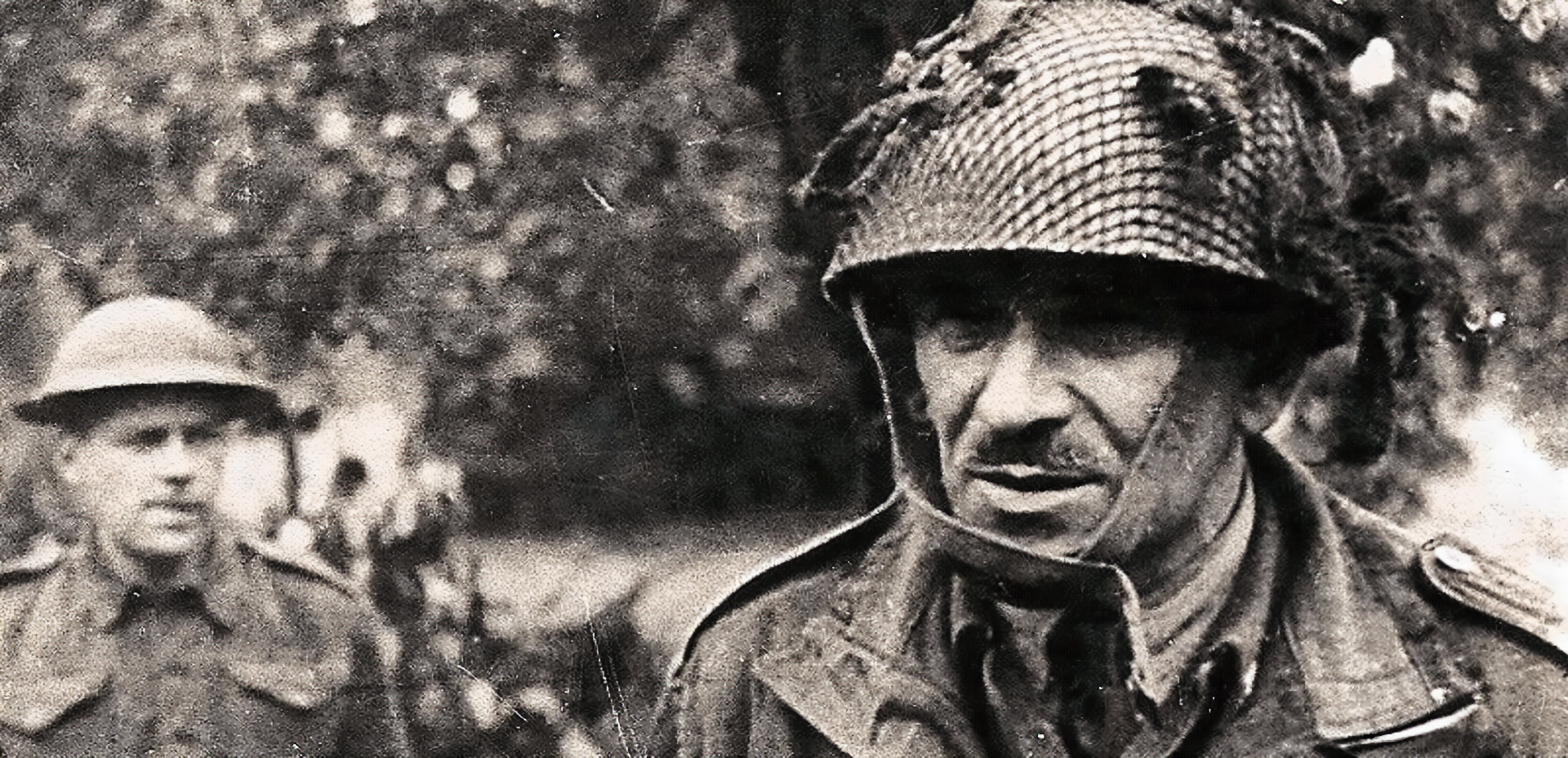He became the scapegoat for the greatest Allied defeat at the end of the Second World War. An outstanding commander who had to fight mainly in lost battles. The biography of General Stanisław Sosabowski reflects, like few others, the drama of the fate of Polish soldiers during the Second World War.
by Grzegorz Wołk
Airborne units have made up the most elite parts of any army worldwide since their inception. Sosabowski had the historic role of commanding the first unit of this type in the Polish Army. He created it during the Second World War under the protection of the British and with the idea that it would be used on home territory. Ultimately, this did not happen and the 1st Independent Parachute Brigade was used in Operation Market Garden. The Poles fighting alongside the British were then ordered to capture the bridges over the Rhine; an operation intended to hasten the defeat of the Germans. Unfortunately, it did not. Over ten thousand paratroopers were killed or taken prisoner, and the British command attempted to blame the failure on Sosabowski.
A difficult youth
The future general grew up in Stanisławów (now Ivano-Frankivsk in Ukraine), one of the many sleepy Galician towns that were part of the Habsburg Empire at the turn of the 20th century. It was at the time an important railway junction of the empire. Sosabowski’s father worked in the railway workshops there and had a drinking problem, which heavily influenced young Stanisław’s early years. When his father died in 1904, the family was inhabiting a modest room connected to the kitchen. His mother’s meagre pension was not always sufficient to feed a family of five: in addition to his mother, Sosabowski had an older brother and two sisters.
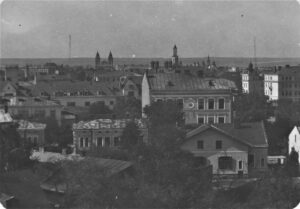
This made it all the more remarkable that, as a teenage boy, he earned money by tutoring in mathematics and French. His biographers wrote that his middle-school classmates called him ‘goat-like death’. Malnutrition apparently must have affected the young lad’s physiognomy. Years later, he would recall this period in simple, concise words: ‘I was an adult despite my age. I was hungry, busy supporting my mother and siblings. As a child I learnt about the difficulty of life and the need to fight for existence.’ There is also a well-known anecdote about the young Sosabowski, who, when asked in winter by a local priest why he was not wearing a coat, replied that he did not have one and simply ran to school as fast as possible to avoid getting overly cold. A difficult childhood forged his character, but it also resulted in a harshness, even coldness toward others, which was sometimes pointed out to the general during his years of military service.
Even before the outbreak of the First World War, he became involved in Polish underground organisations active in Galicia. He passed his final secondary-school exams with honours, and, after completing a year’s course at the Warsaw School of Economics, returned to his home town. There, he involved himself actively in scouting, even becoming a troop commander. However, this was subordinate to underground activities, as scouting was an excellent recruitment base for the Polish independence movement.
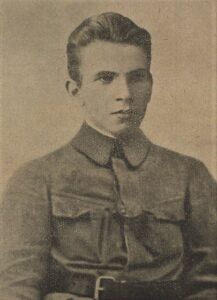
The Great War
Due to the fact that Sosabowski had received military training a year prior to the outbreak of war, he was already mobilised at the beginning of the First World War. He battled in the 11th Infantry Division, whose combat route led from fighting the Russians in Galicia to the retreat through present-day Slovakia. Sosabowski fought in the first battle of Gorlice, among others. Several months of fighting in the Carpathian Mountains, sometimes referred to as ‘little Verdun’, led to the breaking of the Russian front in May of 1915. Corporal Sosabowski pursued the Russians as far as Brest, where he was seriously wounded. A shot knee should have eliminated him not only from participation in frontline combat, but, above all, in the airborne units formed with the development of aviation. This did not happen, although the general’s biographer wrote that he suffered from leg paresis for several years.
While receiving treatment in Olomouc, he met his future wife. Their first son was also quickly born. This was the period when the Austrian superiors promoted Sosabowski to the rank of officer in recognition of his frontline service. He also received two medals for bravery. However, moving about with a cane, the second lieutenant was of no use in combat. He was transferred to the Censorship Office in Złoczów (presently Zolochiv in Ukraine). Over the following months, he completed a course in archiving and served in Lwów and then Bolzano. The end of the war found him in Lublin, where – already a lieutenant – he simultaneously served in the Austrian Army and conspired within the Polish Military Organisation.
In October 1918, he took part in disarming Austrian units and securing weapons for the nascent Polish Army. In his new, dreamed-of army, he found himself as a quartermaster. Proof of his prowess in this new role came in the form of a secondment to the General Liquidation Office, an institution responsible for calculating Polish war losses and making claims against the countries that had caused them.
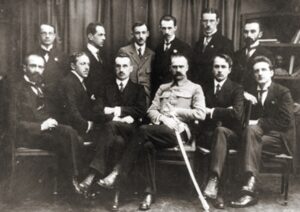
Independence
An injured leg prevented Captain Sosabowski from taking part in the fighting against Bolsheviks. When, in August 1920, not only the fate of Poland but perhaps of the whole of Europe was at stake near Warsaw, he was in Paris. A month earlier, he had left the country for Spa in Belgium. Representatives of the victorious Entente, together with delegations from Poland, Czechoslovakia and Germany, were deliberating there on how to remedy German delays in implementing the Treaty of Versailles. Sosabowski was given the role of provisioning specialist. He must have done very well in this role, because, after the Spa Conference, he was assigned to the Polish Military Procurement Mission in Paris. He stayed there during the critical time of the Polish-Bolshevik War. Recognising Sosabowski’s merits in organising purchases and provisioning, the Polish Army staff promoted him to the rank of major in November 1920.
However, serving at the back of the army did not satisfy him. Even during the Polish-Bolshevik War, he wrote reports asking to be transferred to line units. These were rejected because of his injured leg. It regained strength and dexterity after the fighting had ended. In 1922, he was sent to attend a course at the prestigious Higher War College in Warsaw. He completed it, finishing in the third ten of the class.
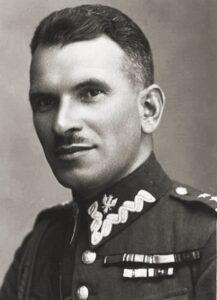
In the years that followed, ‘Sosab’ was finally sent to line units. Already in the rank of lieutenant colonel, he commanded, among others, a battalion in the 75th Infantry Regiment, a garrison in Rybnik, or the 3rd Podhale Rifle Regiment. After a conflict with his superior, he was sent to the Higher War College, where he became a valued lecturer. One of his charges remembered him as a colourful character. ‘A Tatra mountaineer, skier, excessively boisterous, but simultaneously resourceful, clever and a good organiser, not without a penchant for acting.’
From the many memoirs and opinions provided by his superiors, a picture emerges of Sosabowski as an extremely hard-working and ambitious officer. He was even overly independent, which sometimes led to disputes with his superiors. His developing career was not blocked by the military coup of May 1926, which brought Józef Piłsudski’s supporters to power. Sosabowski continued to advance.
After several years’ service at the Higher War College, he became commander of the 9th Infantry Regiment stationed in Zamość in 1937. It was a difficult period in the life of the future commander from Arnhem. At that time his superiors were critical not only of Sosabowski’s tactical skills, but also of his character flaws and inability to command. At the same time, one of his sons was fatally shot and another, close to paralysis after an unfortunate jump into water.
Lieutenant Colonel Sosabowski returned to duty after several months of rehabilitation in Zakopane. He became commander of the elite 21st Infantry Regiment ‘Children of Warsaw’. This was mainly a representative unit, which the new commander tried to prepare for warfare within a few months.
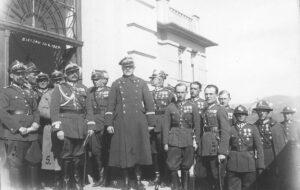
And so the war!
In command of his regiment in September 1939, he executed, inter alia, an effective counter-attack against Wermacht units. However, his main task was to hold the unit and withdraw in an orderly fashion toward Warsaw. The German blitzkrieg in Europe was just beginning, and the Polish Army became its first victim in September 1939. Thanks to Sosabowski’s commanding abilities, he managed to successfully carry out an almost 100-kilometre retreat ending with reaching the Modlin fortress. He then defended Warsaw, and, after its fall, was taken prisoner by the Germans together with his son, also Stanisław.
Both quickly escaped and, still in October, made contact with the nascent underground, the Service for Poland’s Victory. As Sosabowski senior was a recognisable figure in Warsaw, he quickly left for Łódź, where he was to organise the structures of the Service. He stayed there for a short time. Then, as a courier, he made his way to Soviet-occupied Lwów, and from there, via Hungary, to France.
The Hungarian route was at the time the main one taken by Poles ready to continue the fight against the Germans. The expeditious defeat of France came as a shock to the general, but here too he effectively commanded the withdrawal of his unit. He was the last soldier of the 4th Infantry Division to board one of the hundreds of ships departing for Britain. Disembarking in Plymouth, he likely did not anticipate that he would come to play the historic role of a co-founder of the first Polish airborne unit.
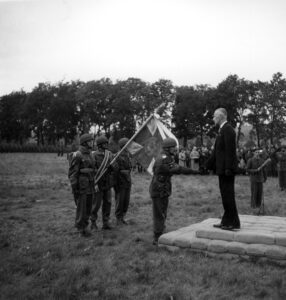
Paratroopers from Arnhem
Once in Scotland, he set about recreating Polish units from the soldiers who had managed to reach the British Isles. He became deputy commander of the 2nd Rifle Brigade, and, from July 1940, was responsible for the formation of the Canadian Rifle Brigade in Eliock, which was to include Canadian volunteers of Polish origin. A month later, the unit was once again renamed, and Sosabowski appointed its commander. This was the beginning of the Independent Parachute Brigade.
The brigade was to train soldiers mainly in diversionary activities. Among others, the Cichociemni (the ‘silent unseen’) – the elite of conspirators – deposited into occupied Poland, were trained here. Owing to the strenuous training and iron discipline introduced in the autumn of 1941, it turned out that Sosabowski’s soldiers were ahead of other Polish units being prepared for airborne operations in terms of training. In 1944, when the brigade’s training process came to an end, it turned out that the Poles were in no way inferior to the British or American units.
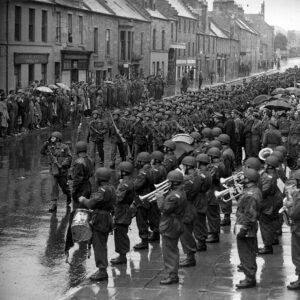
Contrary to the expectations of the soldiers themselves and the Polish authorities in exile, the 1st Independent Parachute Brigade was not used in occupied Poland. In the summer and autumn of 1944, the British planned to incorporate the unit into their forces and use it in a massive airborne operation on the Western Front. Heavily pressed on the issue by the Allies, the Polish government finally agreed.
Sosabowski questioned the concept of Operation Market Garden from the outset. He correctly predicted that it would end in disaster, a point he made during the Allied briefings. This earned him many enemies, and the unceremonious manner in which he used to voice his opinion certainly did not help. As predicted by ‘Sosab’, the operation in the Netherlands ended in complete failure. A number of factors contributed to this: poor reconnaissance of the enemy’s forces, poor weather, an imprecisely executed landing. Despite the extremely self-sacrificing attitude of the paratroopers, the Wehrmacht completely smashed the landing units.
The Polish paratroopers, and especially their commander, became the scapegoat after the operation. British Marshal Bernard Montgomery, in a classified wire, but known to many military officials, wrote that the ‘Polish parachute brigade fought very badly here. Its soldiers showed no willingness to fight if it risked their lives. I do not want this brigade with me any longer.’ It sounded like a sentence.
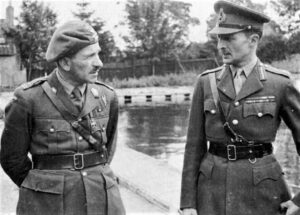
Sosabowski was treated scandalously by the British. Numerous affronts were made to him, his command was recalled, and when he left military service in 1948, he was forced to work as a warehouseman and car fitter. Deprived of his communist-ruled homeland, he resented greatly the fact that nobody had defended him against the accusations of the British commanders.
His honour, priceless for a Polish officer, was only restored to him through literary works and cinema. Gene Hackman, who played Sosabowski in the film A Bridge Too Far, was more like a British gentleman with an ironic sense of humour than a direct and difficult-to-follow Pole. But, more importantly, the film showed what Marshal Montgomery wanted to hide at the end of the war: the unrealistic plans for the British operation, Sosabowski’s scepticism, and the courage of the Polish paratroopers. The general’s memory began to be restored only many years after his death.
Author: Grzegorz Wołk (PhD, employee of the History Research Office of Institute of National Remembrance)
Translation: Mikołaj Sekrecki

